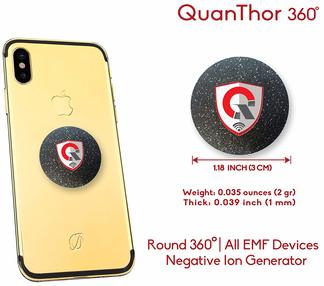This article covers the topic of 5G radiation, a non-ionizing electromagnetic radiation. Because 5G radiation is so tiny, it doesn't have the ability to break the chemical bonds of biological tissues or cause any alteration to cells. It's not clear if 5G radiation affects the risk of skin cancer, and no evidence exists to suggest that it can cause other illnesses.

High-frequency millimeter radiation
High-frequency millimeter wave radiation emitted by mobile devices and wireless networks could cause health effects to human beings. There are several ways that this radiation can cause harm. In 5g towers radiation , the radiation can cause damage to a person's DNA. In other instances, it may cause damage to other areas within the body including the brain.
Recent studies have shown that 5G technology may induce tissue heating. This is why researchers from the International Council on Non-Ionizing Radiation Protection (ICNIRP) has called for a review of the existing standards for biological and thermal safety. The current standards for exposure are not adequate to protect individuals from extreme heat in the event of exposure to pulsed millimeter wave radiation.
5g radiation poisoning
There is no definitive answer to the question of whether 5G radiation can cause skin cancer. It is however believed that RF-EMFs from 5G behave like radiations that emit high-LET. 5g radiation poisoning means that they can cause high levels of free radicals that can be found in the skin. The FCC has not issued any specific guidelines about the risks of 5G technology, and the debate on the subject continues.
Although there has been a variety of studies regarding the impact of radio waves with higher frequencies on human health, they have been largely limited in their scope. However, there is concern over the effects of millimeter-wavelength exposure on oxidative stress and gene expression. The effects could extend to the skin and various organs, including the brain.
Impact on other diseases
The latest generation of technology for wireless, 5G, is rapidly expanding however, scientists are advising against the health risks that could be associated with it. 5G will dramatically increase the quantity of electromagnetic radiation found that we encounter in our surroundings. This issue has led to debates in a variety of nations, including Switzerland. In September 2017, 390 scientists and doctors have backed a motion to put a moratorium on 5G deployment. This motion was not heeded by the European Commission, which is in charge of regulating the use of technology like 5G.
Therefore, more research is needed to study the health implications of 5G. However research has shown that 5G does not cause the same effects in humans as the old mobile networks. Also, it doesn't spread an entirely new strain of coronavirus. In addition it doesn't make people more vulnerable to viral infections.

Exposure measurement
The measurement of the radiation exposure of 5G is a crucial aspect of making sure that 5G networks are safe. There are two methods to measure exposure. One is to measure the RF power that is absorbed by human tissues. The other involves measuring the quantity of radiofrequency energy released by an object. Radiation frequency energy (RF) refers to an electromagnetic field of energy that originates directly from radio receivers.
Within the United States, the FCC has implemented a limit on the power density of mobile devices running 5G. 5g radiation poisoning can only measure power density at a distance of only a few inches. they do not require measurements of every beam. FCC does not require the measurement of each beam. However, how much power is generated by each beam can be determined using computer simulation. The most likely scenario is then selected based on the configuration of each beam.
Limitations of the study
There's been plenty of discussion over the impact of 5G radiation on human health. For instance, the Swiss authorities, for instance, has produced an assessment that concludes that 5G technology does not cause health effects in the short term, however, there aren't any studies that have demonstrated long-term negative effects. However, this report also contains a number of problems that include biased reportage.
The power and frequency of the radio waves that generate energy will depend on the frequency. The energy carried by a millimetre waves will be similar to that of current radio waves, but they are much less visible and will be ideal for high-density settings because they cannot be easily blocked by glass or walls. High-density urban areas would require many smaller, low-power locations, and suburban areas will benefit from 5G stations that operate at lower frequencies.
